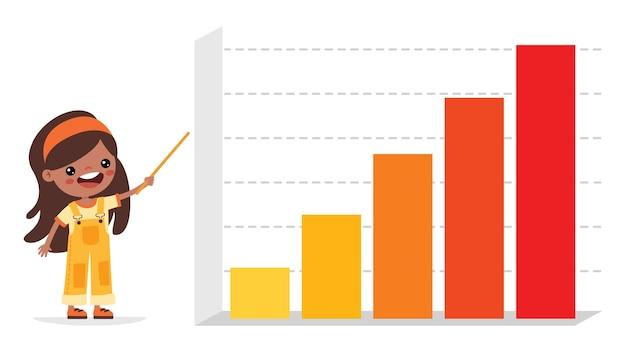Introduction:
Welcome to our blog post where we dive into the fascinating world of economic activities. Economics plays a significant role in our daily lives, from the ways we earn a living to how we spend our hard-earned money. In this article, we will explore the three types of economic activities that drive our global economy, complemented by real-life examples to help you grasp the concepts easily.
So, whether you’re a student, a professional, or simply someone curious about the inner workings of economics, this post will provide valuable insights into the different types of economic activities, how they shape various industries, and their significance in the business world. Let’s jump right in and explore the economic activities that keep our world spinning!

The Three Types of Economic Activities: Explained with Examples
Primary Economic Activities: Going Back to the Roots
In this lively world of economics, we often wonder about the foundation on which it stands. Well, look no further! Primary economic activities are here to break it down for you. These are the activities that involve the extraction and utilization of natural resources directly from the earth. Think of it as going back to our roots, when humans relied heavily on nature’s bounties.
Agriculture: Cultivating the Earth’s Bounty
One prime example of a primary economic activity is agriculture. Picture vast fields of crops dancing under the sun, and farmers laboring tirelessly, catered with back-breaking efforts. From planting seeds to harvesting the crops, these brave souls ensure our plates are filled with nourishment. So, the next time you bite into a juicy apple or savor a delicious loaf of bread, remember the marvelous farmers behind it all.
Mining and Quarrying: Digging Deep for Resources
Another primary economic activity that deserves a shout-out is mining and quarrying. Take a moment to imagine the relentless pursuit of precious minerals and resources buried beneath the surface. Whether it’s diamonds sparkling in secret caves or coal hiding in the depths of the earth, miners brave the darkness and toil to bring these treasures to the surface. They play a vital role in powering industries and fueling technological advancements.
Secondary Economic Activities: Crafting Brilliance from Raw Materials
Now that we have our raw materials all set, let’s move on to the next step: secondary economic activities. This category involves the transformation of raw materials into finished products through manufacturing and construction processes. It’s like witnessing the creation of something brilliant from scratch.
Manufacturing: Engineering the Future
If you’ve ever marveled at a shiny new car or wondered how that snazzy smartphone ended up in your hands, you’ve witnessed the wonders of manufacturing. This secondary economic activity involves using machines, tools, and human expertise to convert raw materials into finished goods. From assembling intricate electronics to fabricating sturdy furniture, manufacturers work their magic to bring innovation to life.
Construction: Building Skies, One Brick at a Time
Construction is yet another secondary economic activity that can’t be overlooked. Think massive cranes towering above the skyline, giant concrete mixers churning with rhythmic precision, and workers donning hard hats to create architectural wonders. With bricks, steel, and sheer determination, construction workers transform empty spaces into homes, offices, and infrastructure that shapes our urban landscapes.
Tertiary Economic Activities: The Power of Services
Now that we’ve witnessed the raw materials being transformed, it’s time to delve into the world of services. Tertiary economic activities involve providing services to individuals and businesses, fulfilling their needs and desires. It’s like having the ultimate power to make people’s lives easier and more enjoyable.
Hospitality and Tourism: Serving Adventures
Picture yourself on a pristine beach, sipping a refreshing cocktail while a friendly waiter serves you with a warm smile. That’s the magic of hospitality! From hotels to restaurants, tourists around the world rely on the services provided by this tertiary economic activity. Whether it’s a soothing massage at a spa or a thrilling adventure organized by a tour guide, these services make our travel experiences truly memorable.
Financial Services: Money Matters Made Easy
Let’s face it, managing finances can drive us all bananas. Thankfully, financial services come to the rescue! Whether it’s banking, insurance, or investment advice, the financial sector plays a pivotal role in shaping the economy. These services help businesses flourish, individuals plan for the future, and ensure that money matters don’t keep us up at night.
The Dance of Economic Activities
Now that we’ve unraveled the three types of economic activities, it’s clear that they dance together in perfect harmony. The primary activities provide the foundation, the secondary activities transform, and the tertiary activities bring joy and convenience. Together, they form the intricate web of economic growth, each playing a unique role in our vibrant world. So the next time you analyze the economy, remember the tireless efforts of individuals engaged in these three types of economic activities that keep our world spinning with prosperity.

FAQ: Three Types of Economic Activities Explained with Examples
What are the different types of economic activity
Economic activities can be broadly classified into three main types: primary, secondary, and tertiary activities.
What are the three types of economic activities explained with examples
Primary Economic Activities
Primary activities involve extracting or harvesting natural resources directly from the environment. Some examples of primary economic activities include:
- Agriculture: Growing crops, raising livestock, and cultivating plants.
- Fishing: Catching fish, shrimp, or other seafood from oceans, rivers, or lakes.
- Mining: Extracting minerals, coal, oil, or natural gas from the earth.
- Forestry: Harvesting timber, logging, and managing forests sustainably.
Secondary Economic Activities
Secondary activities involve transforming raw materials obtained from primary activities into finished products. Here are a few examples of secondary economic activities:
- Manufacturing: Producing goods using machinery, tools, and labor. This includes industries like automobile manufacturing, electronics, and textile production.
- Construction: Building infrastructure, including residential and commercial properties, roads, bridges, and other structures.
- Processing: Converting raw materials into refined products, such as refining crude oil into gasoline or wheat into flour.
Tertiary Economic Activities
Tertiary activities involve providing services to individuals, businesses, or the government. Examples of tertiary economic activities include:
- Retail: Selling goods directly to consumers through stores, online platforms, or catalogs.
- Hospitality: Providing services in the tourism and hospitality industry, such as hotels, restaurants, and travel agencies.
- Healthcare: Offering medical services, hospitals, clinics, and health-related activities.
- Education: Providing formal or informal education, including schools, universities, tutoring services, and training programs.
What are the three types of meetings
Oops! I think you might have confused your questions here. The three types of economic activities are primary, secondary, and tertiary. As for meetings, there are various types, such as brainstorming sessions, team meetings, and client meetings, depending on the purpose and participants involved.
What are examples of investing activities
Investing activities refer to using resources to purchase assets with the expectation of generating income or increasing value in the future. Some common examples of investing activities include:
- Buying stocks or shares in companies.
- Investing in real estate properties.
- Purchasing government or corporate bonds.
- Acquiring precious metals like gold or silver.
- Putting money into mutual funds or index funds.
What is the economic activity? Give an example.
Economic activity refers to any action or process that involves the production, distribution, or consumption of goods and services. For example:
Let’s say you own a bakery. Baking bread, cakes, and pastries and selling them to customers would be considered an economic activity. You are producing goods (baked goods) and distributing them to consumers who buy and consume them.
What is the most common type of ownership
The most common type of ownership is sole proprietorship. In this form, a business is owned and operated by an individual who assumes all the risks and responsibilities. Many small businesses, freelancers, and self-employed individuals opt for sole proprietorship due to its simplicity and flexibility.
What are the six different types of businesses
There are six common types of businesses:
- Sole Proprietorship: An individual owner manages the business.
- Partnership: Two or more people share ownership and responsibility.
- Corporation: A legal entity separate from its owners, providing liability protection.
- Limited Liability Company (LLC): A hybrid entity that combines elements of a corporation and a partnership.
- Cooperative: Owned and operated by a group of individuals for their shared benefit.
- Nonprofit Organization: Operates to fulfill a specific mission or purpose, rather than generating profit for its members or owners.
What are the five activity type levels
I’m afraid you might have mixed up terms here. There isn’t a widely recognized concept of “five activity type levels.” However, in the context of economic activities, we have the three main types: primary, secondary, and tertiary.
What are the six basic business activities
Business activities can be categorized into six broad types:
- Sales and Marketing: Promoting products or services and generating sales.
- Operations: Managing and producing goods or delivering services efficiently.
- Finance and Accounting: Managing financial activities, bookkeeping, and budgeting.
- Human Resources: Hiring, training, and managing employees.
- Purchasing and Supply Chain Management: Procuring needed resources and managing the supply chain.
- Customer Service: Providing support, handling inquiries, and ensuring customer satisfaction.
Remember, economic activities encompass various aspects of production, distribution, and consumption that drive our economy forward.
